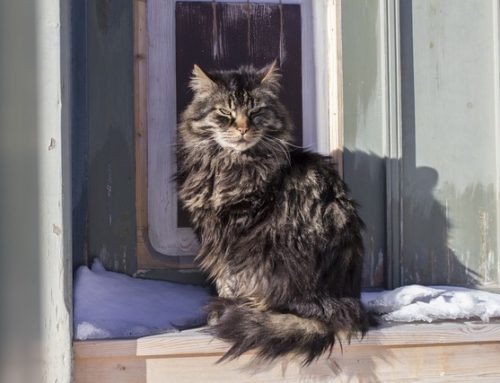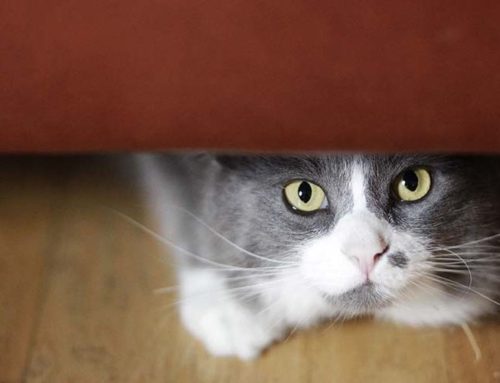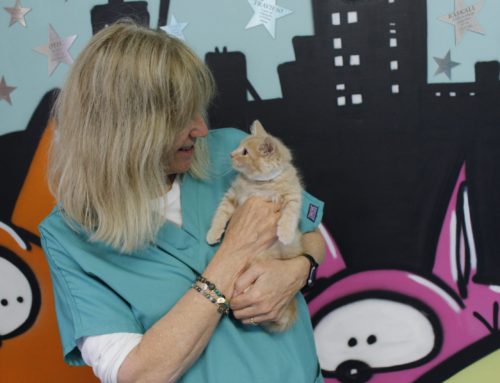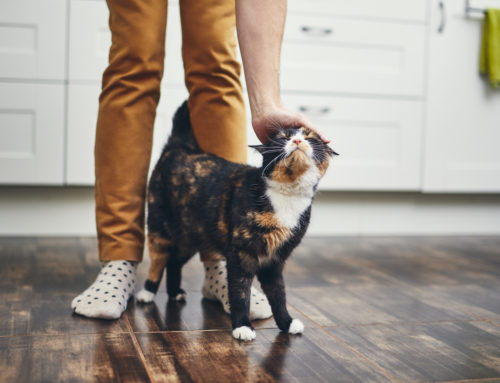Feline panleukopenia virus (FPV) is a highly contagious parvoviral infection of cats and has a particularly high incidence of disease in feral and stray cat populations. This virus infects all ages of cats and is usually fatal in kittens.
Outbreaks of panleukopenia are often associated when there is an increase in populations of kittens , i.e. “kitten season”.
The virus is hardy and can persist in the environment for months to years. It is able to withstand extreme heat and is resistant to many disinfectants including Parvosol, Roccal, Triple Two and isopropyl alcohol.
FPV primarily targets the immune system and gastrointestinal tract. The central nervous system may also be affected.
Clinical signs
- Decreased appetite/weight loss
- Lethargy
- Vomiting
- Diarrhea
- Fever
- Sudden death (especially in kittens)
- Aborted fetuses and stillbirths
- Neurological signs (uncoordinated gate, blindness)
Other diseases may mimic the signs of FPV, therefore it is important to rule out other causes for similar clinical signs.
Trap Test Vaccinate Alter Release (TTVAR)
TTVAR programs provide an excellent opportunity to test cats showing clinical signs, euthanize positive cats and vaccinate healthy cats. Humanely euthanizing cats infected with FPV is a last resort, but it is an important way of preventing spread of this deadly disease.
Tests for FPV
The same test used to detect parvovirus in dogs is used to test for FPV in cats. The tests are sensitive and specific. False positive tests may result from recent vaccination with a modified live parvovirus containing vaccine. False negative tests may result from the intermittent shedding of virus in feces. Clinical signs strongly suggestive of the disease can guide appropriate decision making regarding euthanasia.
Vaccination
The MVL vaccines for FPV are highly effective and can provide rapid protection for cats against this deadly disease.
Prevention
Practicing and maintaining high cleaning standards will reduce the spread of disease. Cleaning and disinfection of all materials that are used during TTVAR is critical. Environmental contamination from traps, carriers, gloves, transport vehicle surfaces, and bowls should be considered. *
Prevention of the spread of FPV is critical to the lives of feral cats. Individuals who are involved with TTVAR programs have a unique and critical opportunity to reduce the spread of FPV between cats and provide protection to the colonies they manage.
*Bleach diluted at 1:32 (1/2 cup per gallon water) should be applied to all contaminated surfaces with a contact time for at least 10 minutes. Additional disinfectants that can be used include Trifectant or Virkon-S (Potassium peroxymonosulfate) available from animal supply companies. The UC Davis Koret Shelter Medicine website provides excellent recommendations for cleaning protocols and can be found here.
References and Websites
Brun, A., G. Chappuis, et al. (1979). “Immunization against panleukopenia: early development of immunity.” Comp Immunol Microbiol Infect Dis 1 (4): 335-9.
Fischer, SM, Quest, CM, Dubovi, EJ, et al. Response of feral cats to vaccination at the time of neutering. JAVMA 2007;230:52-58.
Pedersen N.C. Feline panleukopenia virus infection. Feline husbandry, disease and management in the multiple cat environment. 1991:183-187.
UC Davis Koret Shelter Medicine Program. “Information Sheet: Feline Panleukopenia.” Shelter Medicine.
http://www.sheltermedicine.com.





